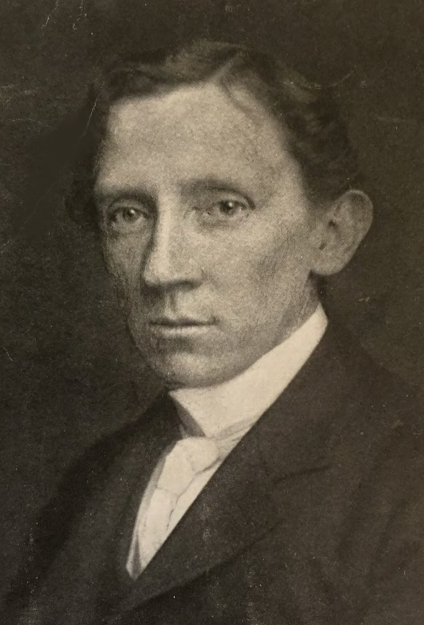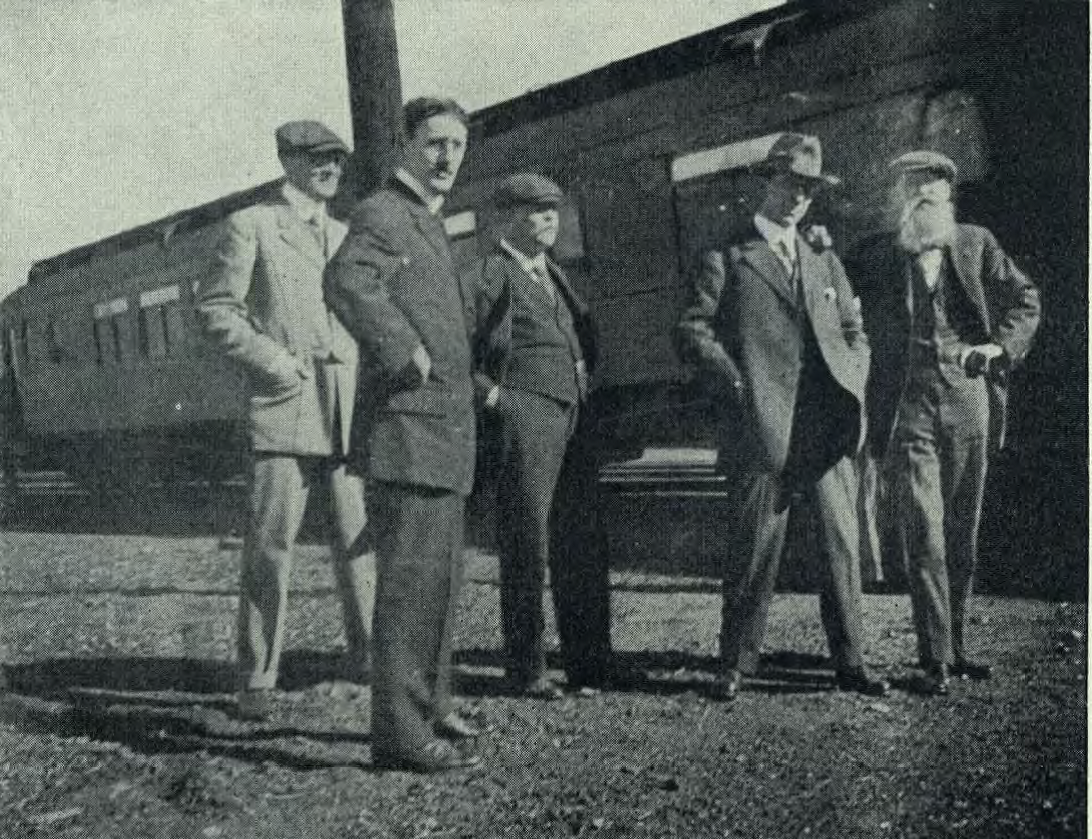Elliott Daingerfield's Grand Canyon adventure

Until 1901, the Grand Canyon had been a mysterious and inaccessible destination that was seen only by the most determined visitors. This changed on September 18th that year, when the first Santa Fe Railroad Company train arrived at the south rim. By 1905, the lavish El Tovar Hotel was completed through a partnership with the railroad company and the Fred Harvey Company, the premiere provider of luxurious service for hotels and restaurants at the time.
The Santa Fe then organized an expedition of artists to create works of art for use in the railroad’s extensive Grand Canyon marketing campaign. The company selected five of the most famous and prominent artists of the time, who each were asked to paint Grand Canyon scenes using their own unique vision and style. The five were Elliott Daingerfield, Thomas Moran (who had visited and painted the Grand Canyon before, in 1873 and again in 1901, in very different circumstances), Dewitt Parshall, Edward Potthast, and Frederick Ballard Williams, the creator of Burke Mountain, the first painting bought for HMA’s collection.
On the evening of November 5, 1910, Elliott Daingerfield (photo on left) and the other artists gathered at the Union League Club in Chicago for a private dinner. Later that evening, the artists were joined by their wives and families in a private railway car provided by the Atchison, Topeka, and Santa Fe Railroad. They traveled in the peak of luxury, being treated to the best food and accommodations, before arriving at the El Tovar Hotel at the Grand Canyon’s South Rim on November 8. (In the train station photo, Daingerfield is the gent in the tall hat. The hatless dapper in front is Frederick Ballard Williams.)

From their headquarters at El Tovar, the artists were driven three miles to Hopi Point for their first dramatic introduction to the Canyon. With eyes closed they were led to the rim, “that the vision might burst upon them for the first time in its entirety." Nina Spalding described what they saw when they opened their eyes.
A most unusual sunset… the sky along the horizon was as red as a pigeon-blood ruby; it was as though the sun shone through a stained glass window. … Slowly the color faded from the sky and the distant towers and domes changed from pink to blue, leaving the pinnacles alone crested with light as though illumined from within. Great purple shadows gathered at their foundations. The awful depth became mysterious and terrifying and no sound was heard save the rushing of the wind through the pines and a far away murmur of the Colorado river a mile below. No word was spoken on the homeward drive.

The artists never tired of the view, at all times of the day and into the moonlit night. The Canyon inspired them to create small scale study paintings, sketches, and notebooks to help them capture exactly what they were seeing, for later use or not. Nina Spalding recalled, “Everyone awakened at dawn with somewhat the same feeling that they had when children waiting for Christmas morning. The painters were out making color notes for hours before breakfast.”
The group stayed at the Canyon for ten days. Daingerfield was so enchanted by the Grand Canyon that he went back in 1913, bringing his whole family and paying for the trip himself.

Elliott Daingerfield (1859-1932) Grand Canyon. 1912
oil on board Private Collection
Sources.
From research by Jon Carfagno, HMA Executive Director and curator of the HMA exhibition A GRAND VISION: Elliott Daingerfield Paints Grandfather mountain and the Grand Canyon (December 8, 2018 - April 20, 2019), and by Kristina Anthony, HMA Exhibitions Manager..
Nina de Garmo Spalding Stevens (1876-1959), Assistant Director of the Toledo Museum of Art, had been asked to accompany the painters at the Grand Canyon and to write about their visit. She did both, including in an article published in the February 1911 Fine Arts Journal, pp. 104-113. The quotes and photos are from that article. (Available from JSTOR)
The Santa Fe tourist poster is used with permission. The postcard, a Fred Harvey Phostint, is by an “Unknown author [Public domain], via Wikimedia Commons.”
Blog post about Elliott Daingerfield here

This post is # 19 of the 75 stories to celebrate HMA's 75 years.
Post by Karin Borei, HMA Project Coordinator, writer and editor as needed, and HMA blogger since our blog's inception in March 2015

